p-gains = 5.000000, 0.000000, 0.000000, 5.000000 d-gains = 0.250000, 0.000000, 0.000000, 0.250000
If the gains are put to the normal values of kp=10 and kd=0.5, the legs will oscillate violently. For this test, clock->vel == 0.150207 and clockstep had values of 0.000751 about 75% of the time and 0.005406 about 25% of the time (note the factor of 10 difference!).
First, an explanation of what I am trying to do here:
After Calibration, I make the wings to go initial positions of 1.5. This occurs via the
In general, there are several things you should notice in the plots below. During the
Also, here is how I compute the target position and velocity:
wing_change = clock->vel * state_velocity * clockstep;
target.pos[i] = wing_change + f->state_target_last[];
target.vel[WING] = clock->vel * clock->vel * state_velocity;
Description of variables:
clock->vel = speed of global clock, the number on the GUI for the speed
state_velocity = a number I set, related to the speed I want the wing to go. This is a constant.
clockstep = global clock time difference between when updateClock() was called this time and last time.
f->state_target_last[] = last target.pos[i] last time updateClock was called
In summary, every time updateClock() is executed, we move the target position further ahead by wing_change (for the wing). The target velocity is correctly set so that if the leg were continuously moving at the target velocity it would pass through all the target position points at the correct times.
Plots of variables I logged:
- Wing Angle:
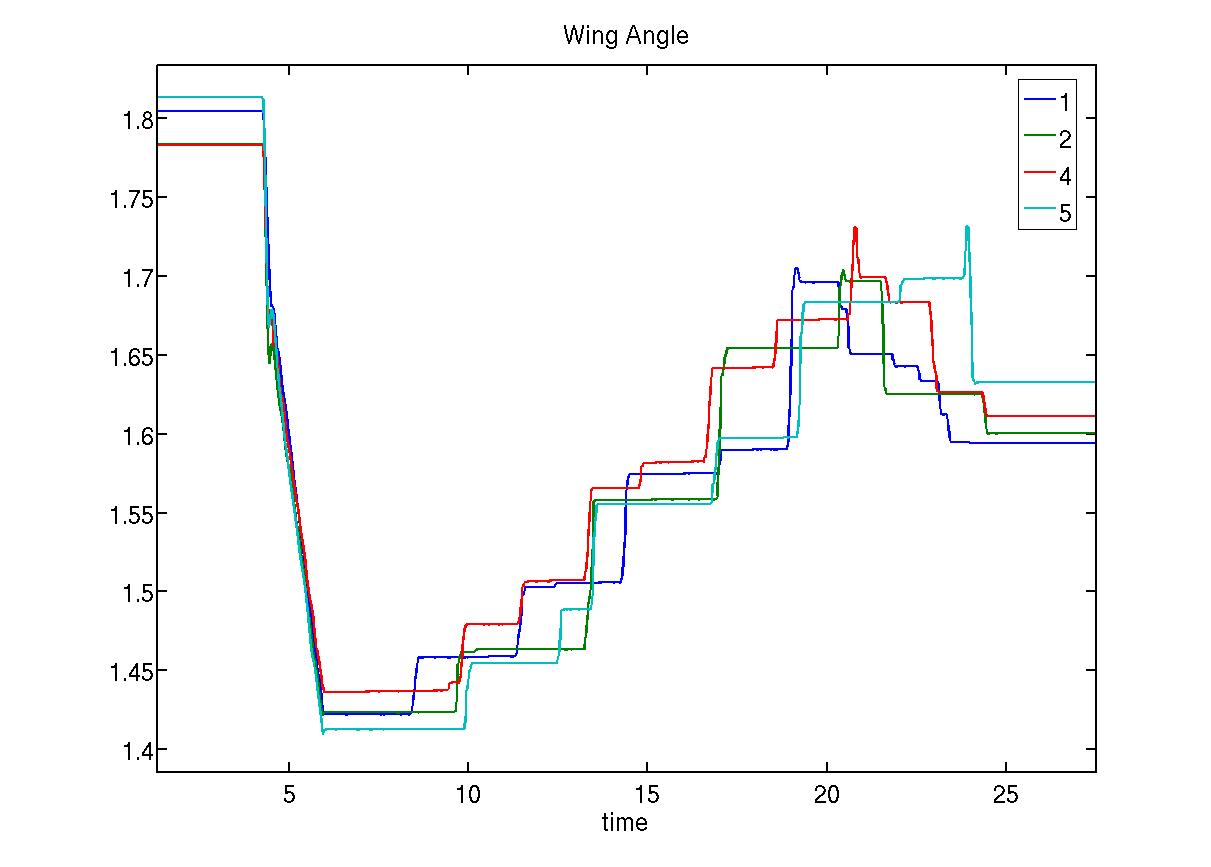
- Wing Angle Zoom:
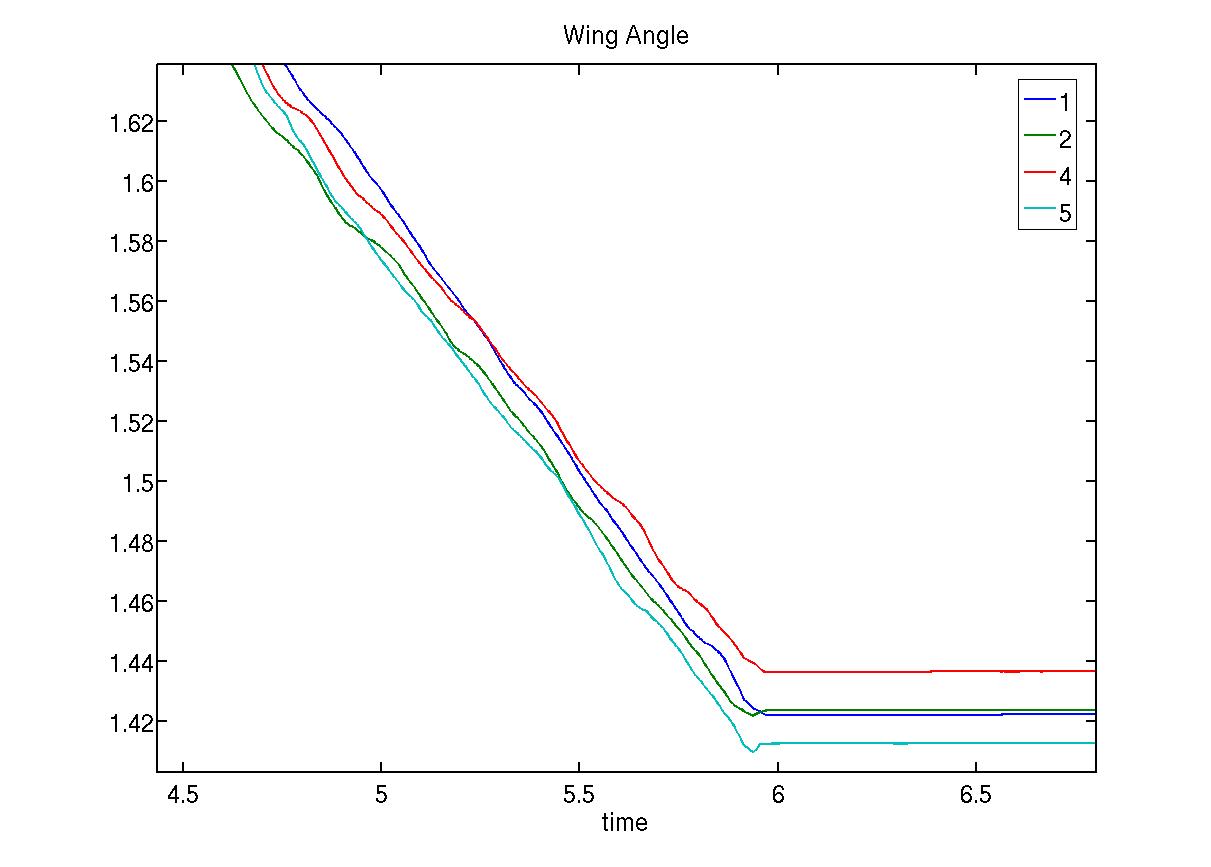
- Target Pos:
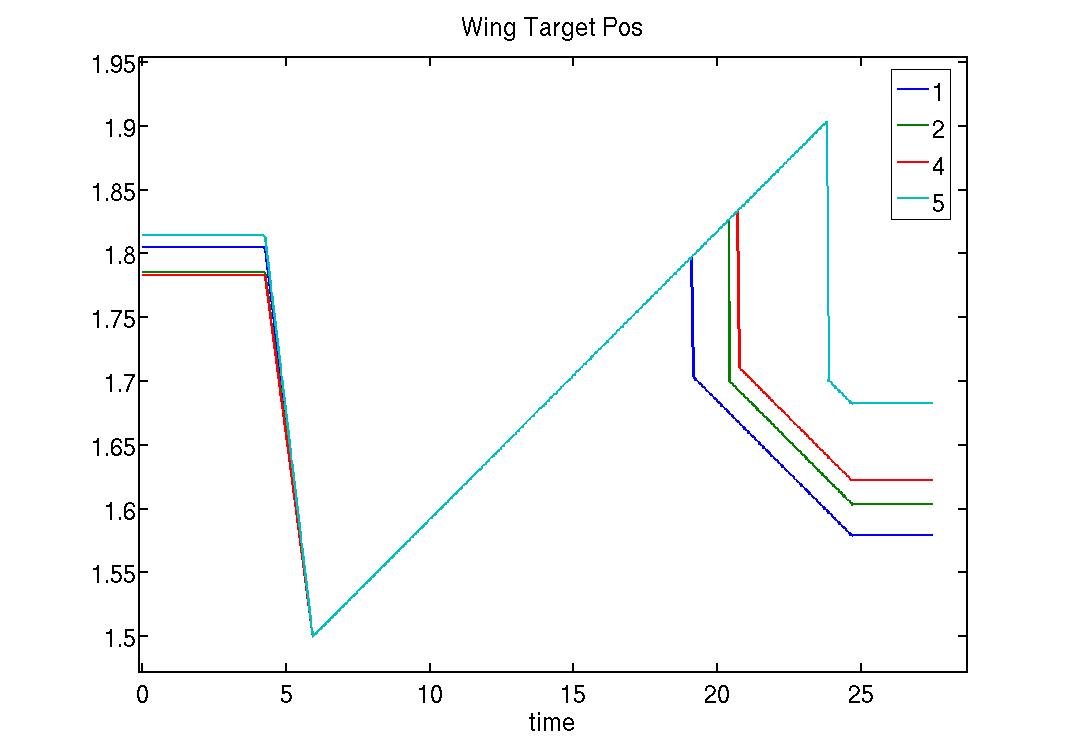
- Target Pos Zoom 1:
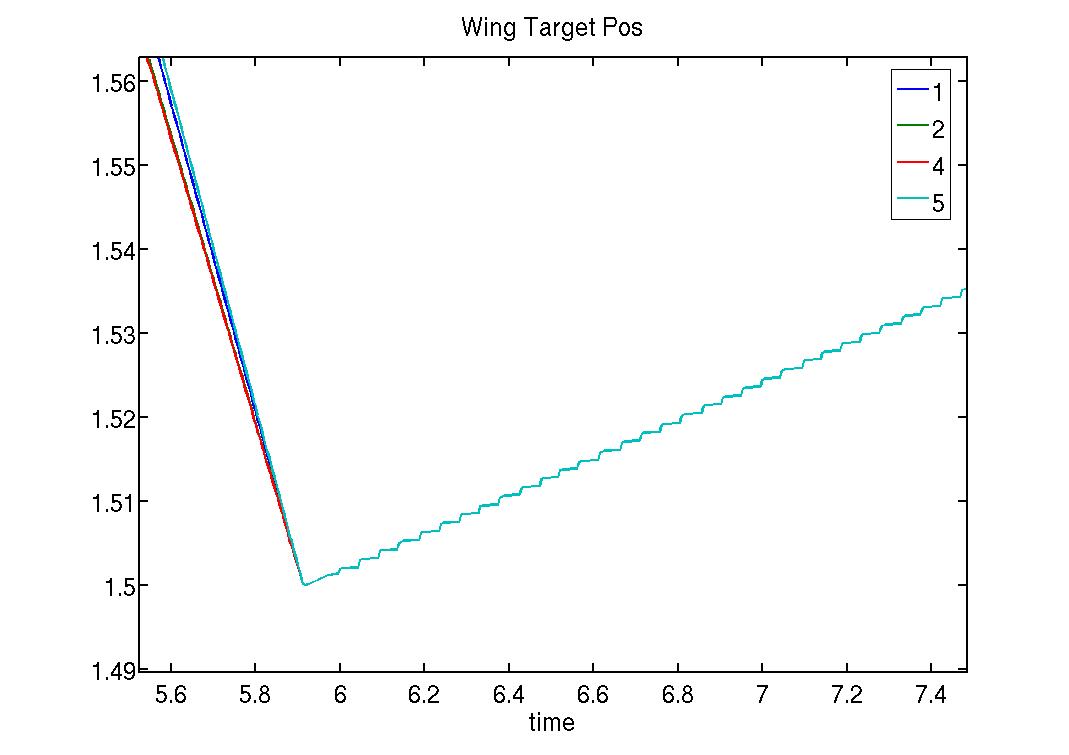
- Target Pos Zoom 2:
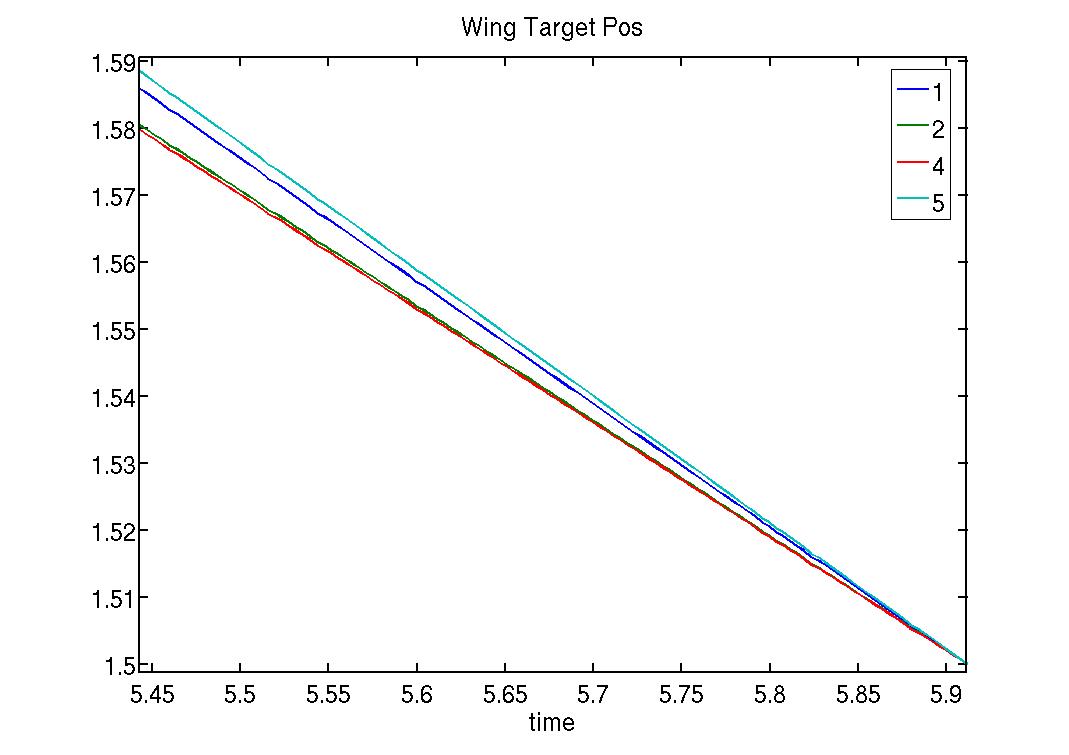
- Target Vel:
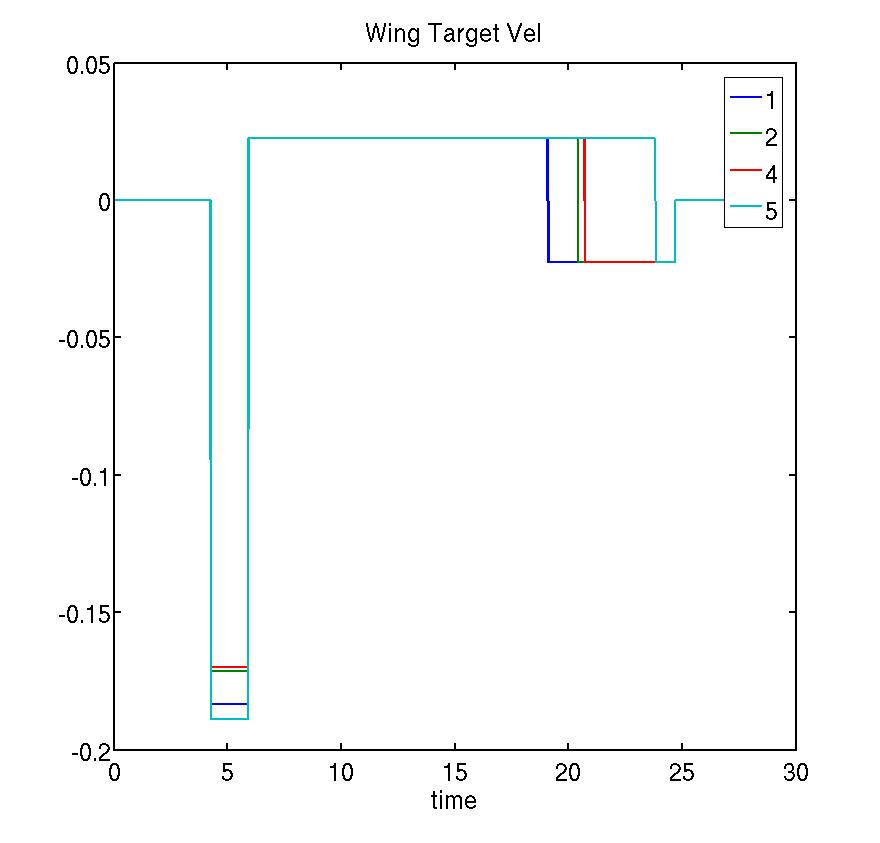
- Wing Speed:
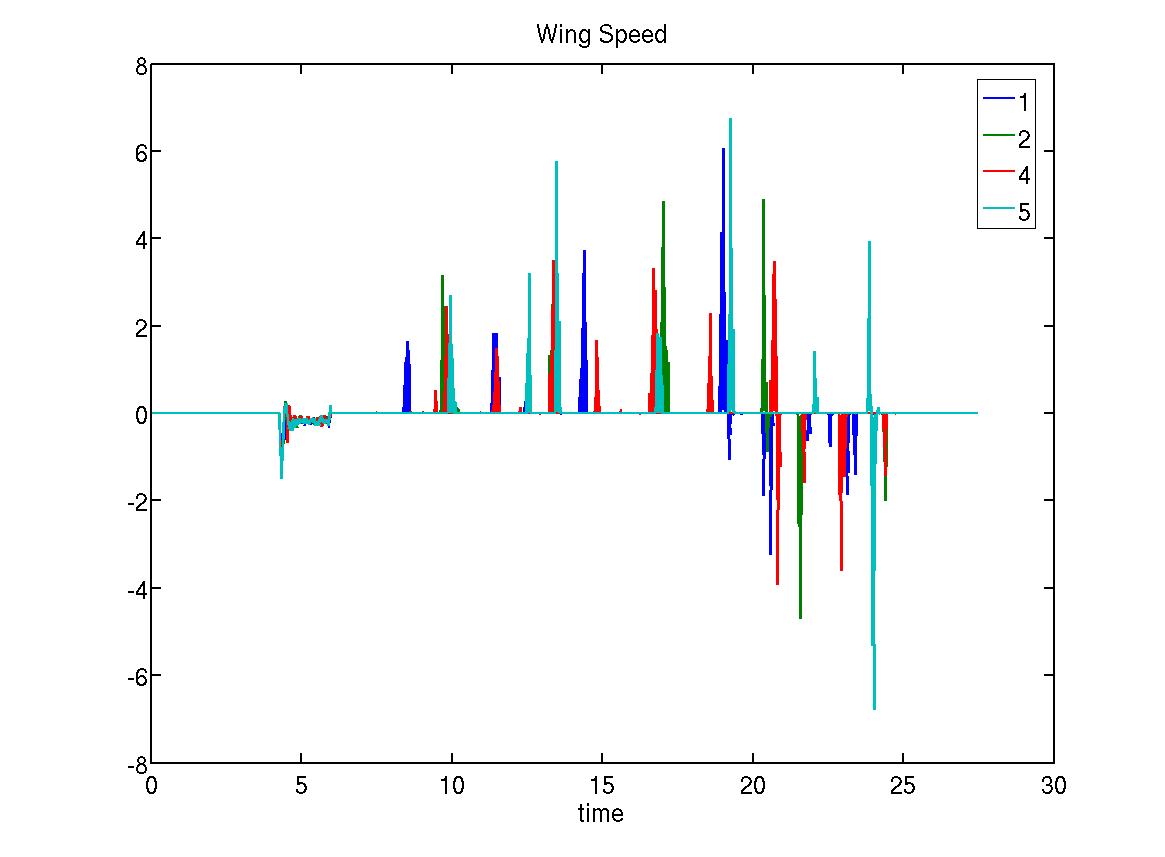
- Wing Speed Zoom:
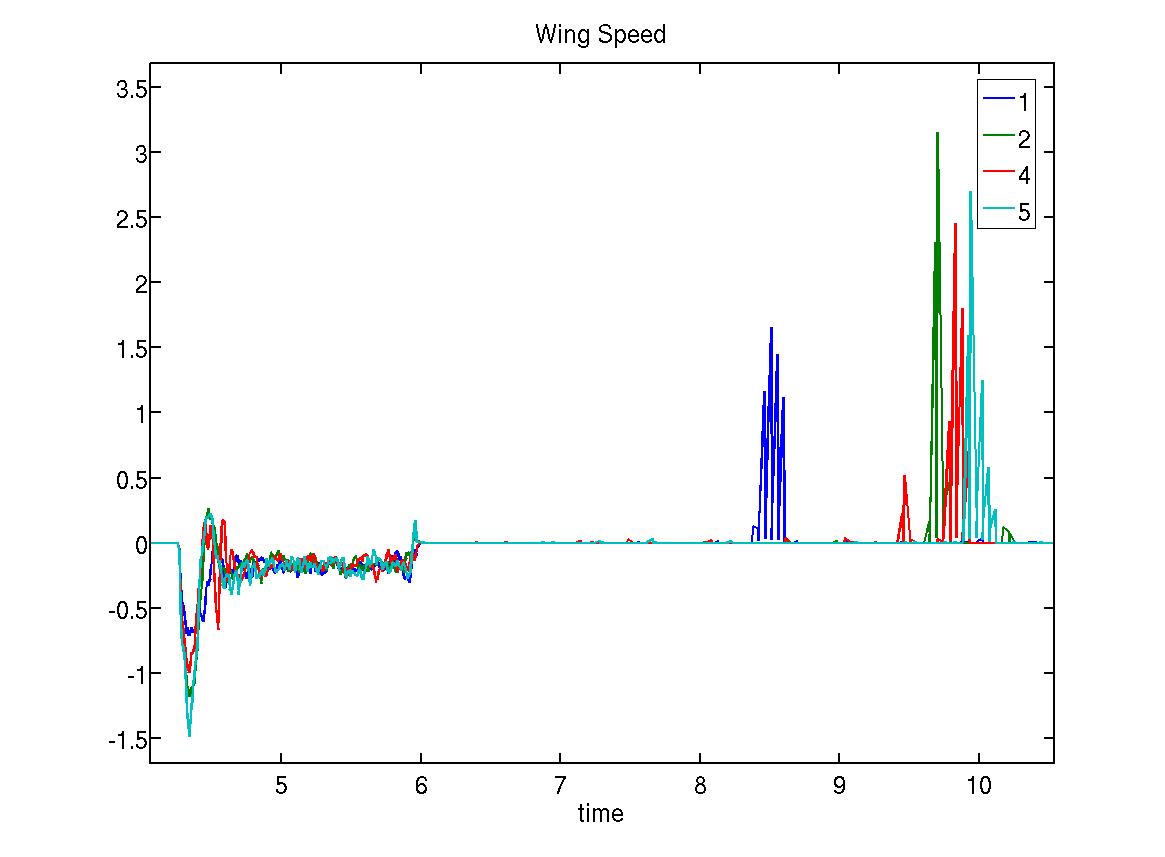
- Wing Torque Cmd:
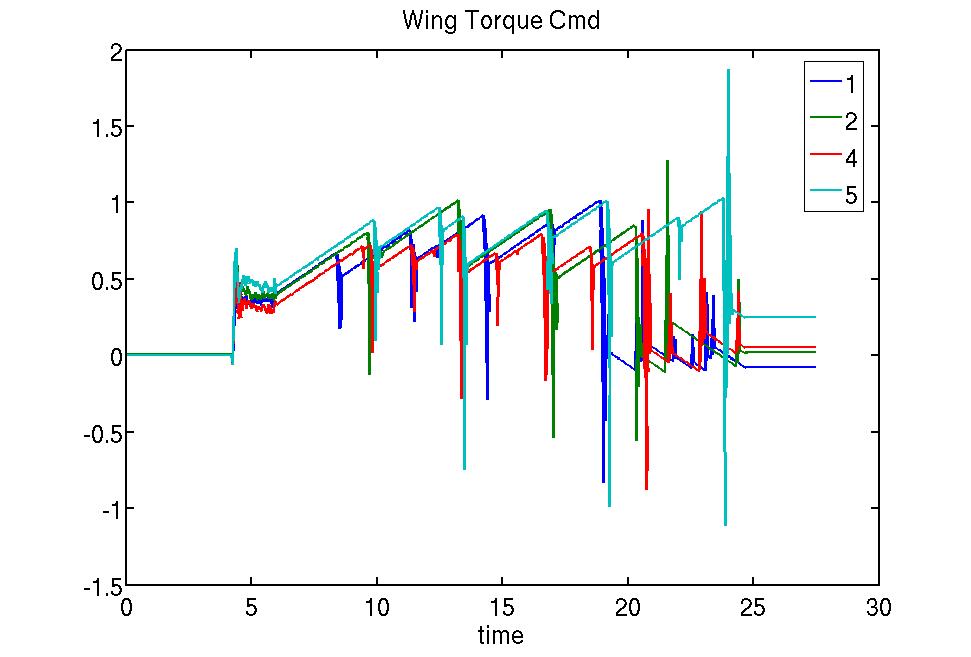
- Wing Torque Cmd Zoom 1:
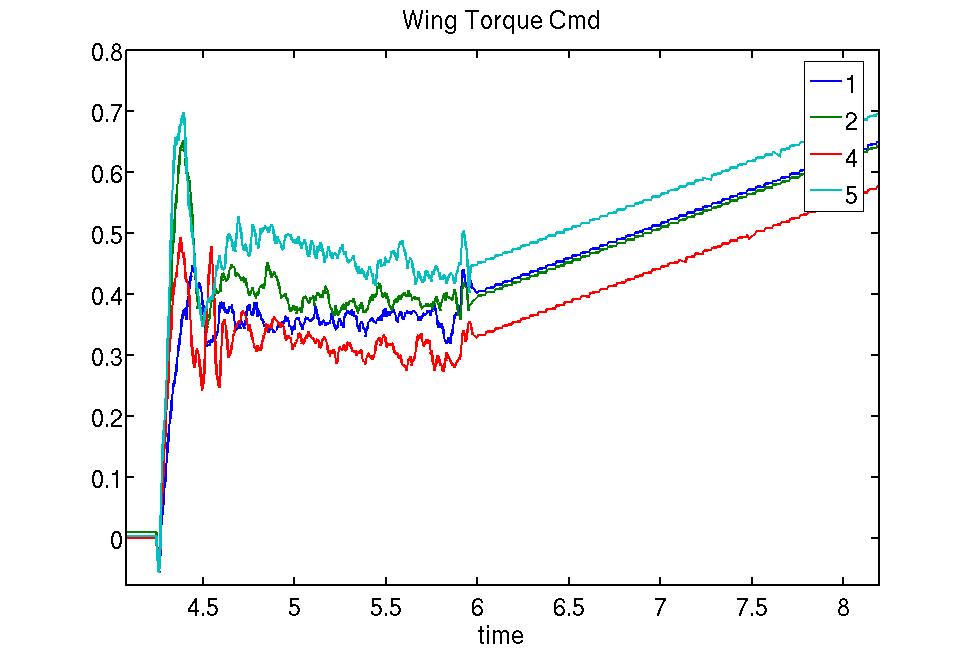
- Wing Torque Cmd Zoom 2:
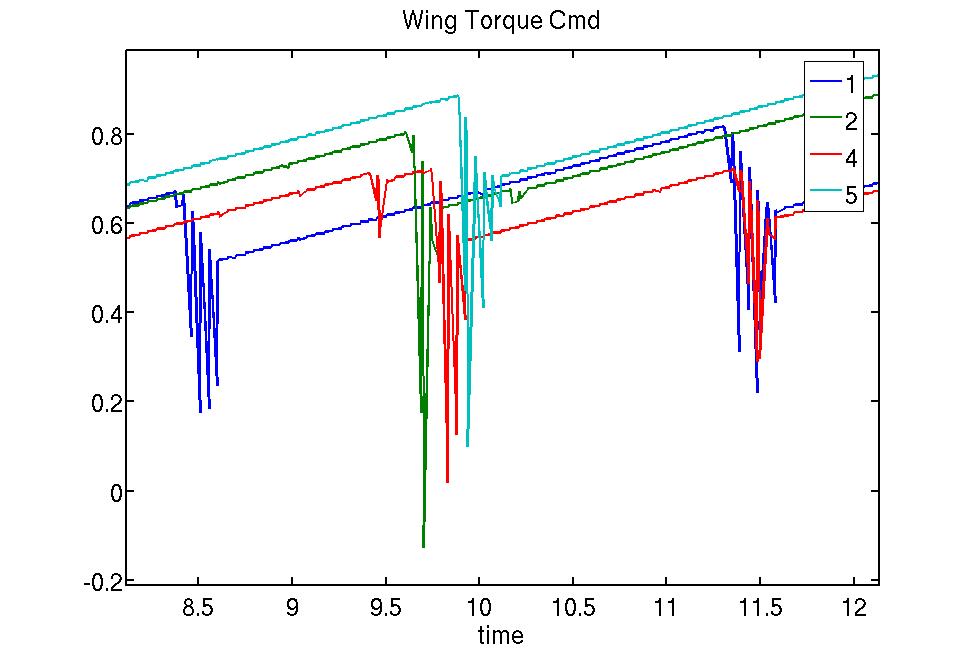
-- AlanAsbeck - 21 Jul 2006
Ideas, requests, problems regarding TWiki? Send feedback